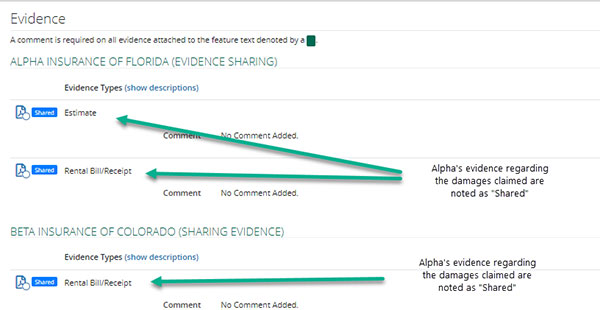How does this change impact you as an arbitrator?
You will see the “Shared” indicator when reviewing the feature damages (see graphic below). For most cases, you will hear the case as you normally would.

There may be instances, however, when a party incorrectly attaches damages evidence to the wrong section. For example, the Recovering Party attaches its estimate with the liability arguments. This incorrect placement prevents the Adverse Party from reviewing the evidence.
If the Adverse Party raises a specific challenge to the Recovering Party’s damages, you will render a decision as normal. A specific challenge to the damages signals that the Adverse Party may have been provided with the evidence prior to arbitration being filed, and they were not prejudiced by the incorrect placement of the evidence. For example:

A concern arises when the Responding Party is unable to raise a specific challenge regarding the damages based on the Recovering Party’s incorrect placement of evidence when such evidence was not shared prior to arbitration being filed. Here, the Responding Party may dispute the damages noting that the supporting documentation was not properly attached and, as such, was not viewable (see below). As the arbitrator, you will need to determine if this lack of evidence sharing hindered the Responding Party’s ability to dispute damages. If yes, damages will not be awarded.

AF understands evidence sharing is a new concept for all parties; however, we are confident this change will be beneficial to AF’s membership and allow more claims to be settled once the damages sought are known.



